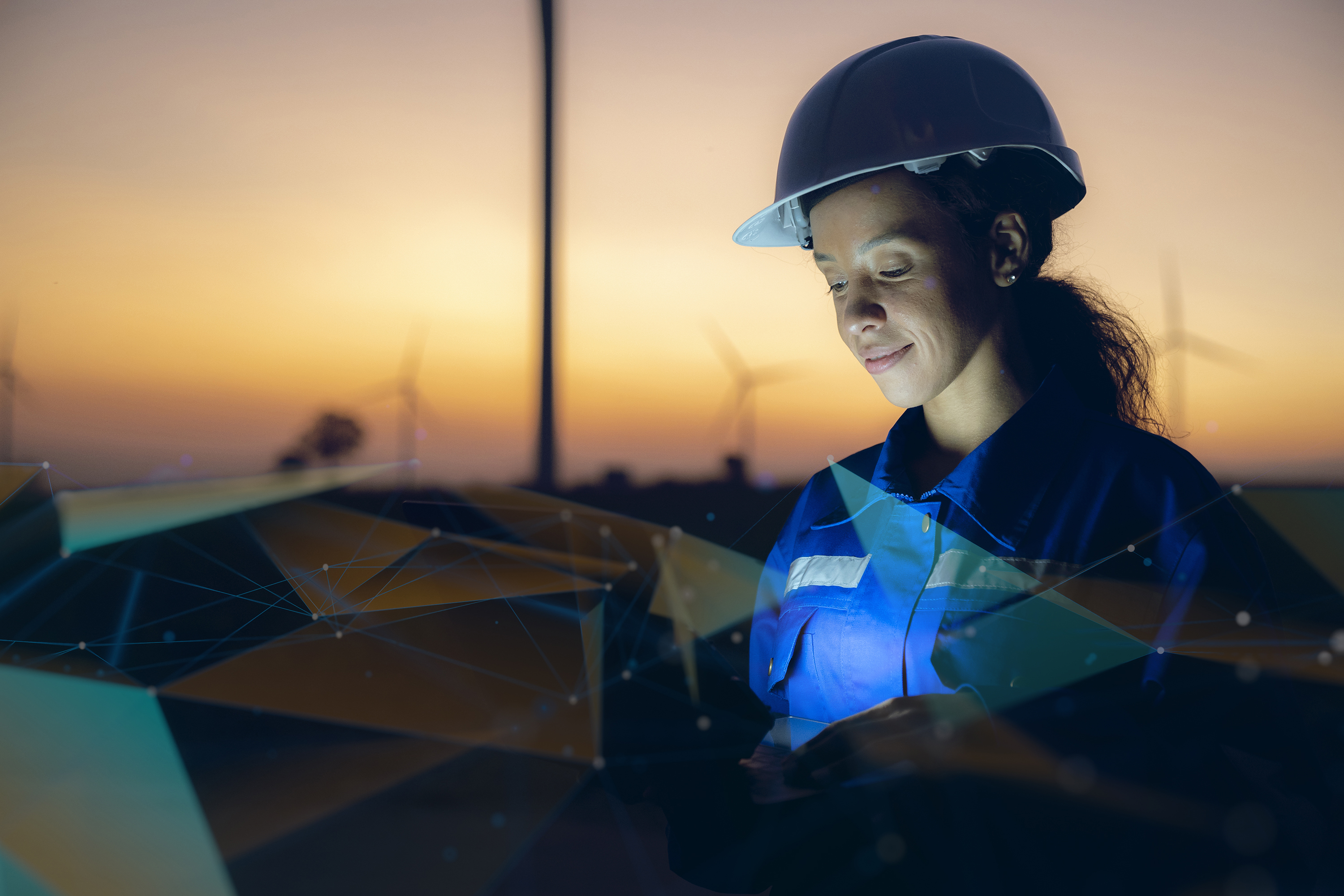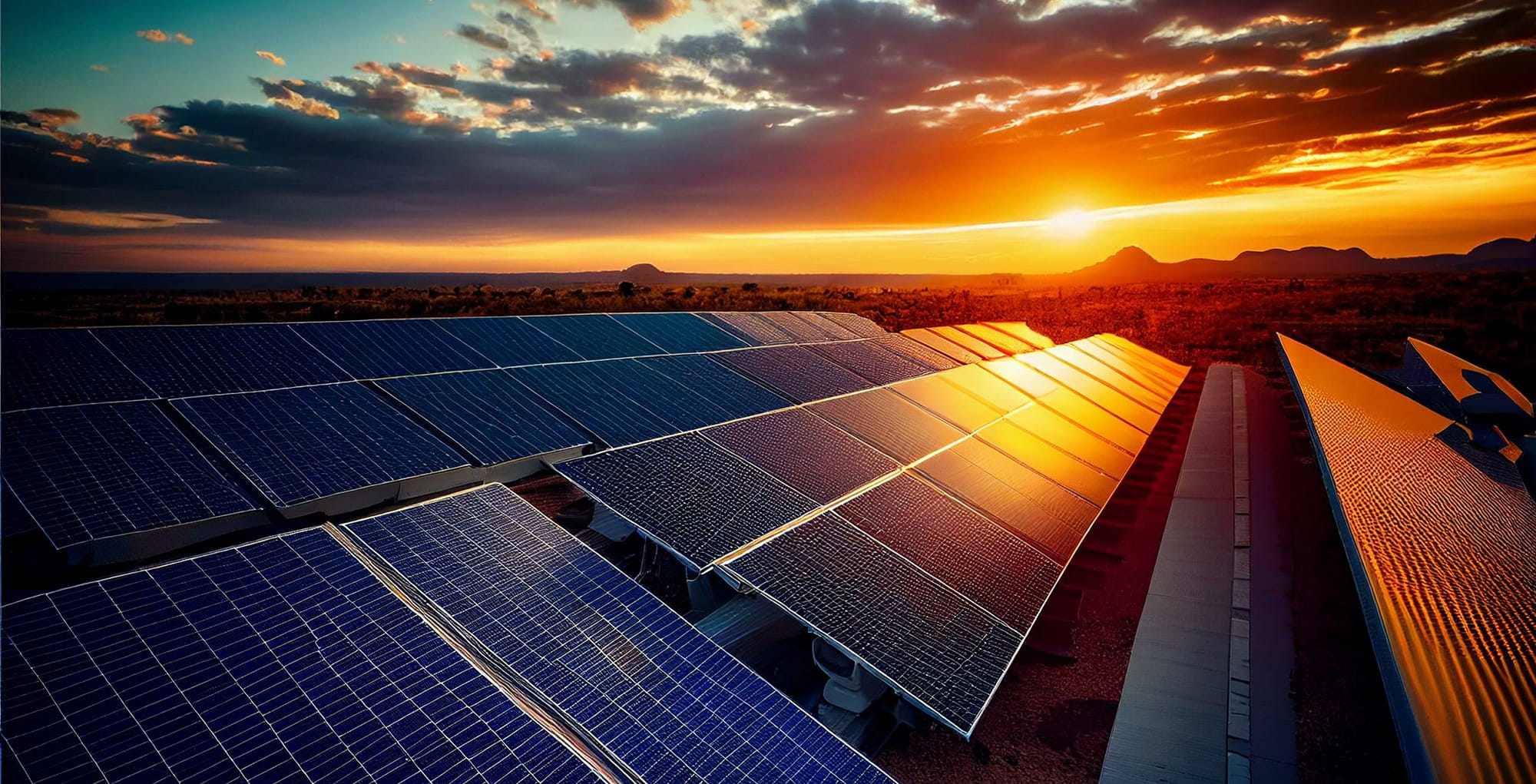Unlocking Decarbonization Through Digitalization
Digitalization and decarbonization go hand in hand. Nowhere is that more evident than in the energy sector. Energy is a vital area of focus as global efforts to meet emissions reduction targets gather pace.
7 minutes
3rd of April, 2024

The role of energy transformation in addressing climate change
In 2015, the landmark Paris Agreement to limit climate change to well under 2 degrees below pre-industrial levels and pursue efforts to keep it to 1.5 degrees defined the scale of the global warming challenge the world is facing. Since then, attention has increasingly focused on the central role the energy sector will play in that challenge.
Energy accounts for around 75% of global greenhouse gas emissions, so transforming the sector will be vital to meeting the overall challenge.
At the latest COP28 conference in Dubai, in 2023, nations hailed “the beginning of the end of the fossil fuel era”. Digitalization will be key to make that a reality, but it won’t happen overnight.
Emerging technologies open up the potential for making use of cleaner, greener energy sources but also provide opportunities to make the fossil fuel and nuclear industries–which are set to be around for many decades, even if countries are committed to finding alternatives–more efficient, safer and less polluting.
Cleantech focus
Emerging clean technologies, or cleantechs, that offer ways to power communities without the use of fossil fuels will be called into play to help the sector reduce its environmental impact. An important element in this energy transition is the ability to harness the transformative power of technology. Akkodis’ engineers and software developers are at the forefront of the green shift, using technological expertise to advance sustainability.
Akkodis is a long-standing partner of the Danish wind industry. Akkodis software engineers are contributing to numerous projects using software to optimize the design and the output of wind turbines. They are a challenging technology combining large-scale mechanics with hi-tech sensors and software.
It’s not just about the move away from fossil fuels to renewable energy sources. This transition will play a vital role requiring fundamental changes to the electricity grid. The grid is set to become smarter to accommodate unpredictable and decentralized energy flows. These flows might come from giant offshore wind farms or solar panels on the roofs of individual homes.
The green shift in the energy industry is closely linked with the transition into smart industries. Advances in sensor technology, connectivity, data science, IoT, digital twins, advanced analytics, and robotics offer opportunities. They aim to boost renewables, including by refining and optimizing wind turbines. The goal is to increase their output and efficiency for a more sustainable energy future.

Time is of the essence
The much-debated Paris Agreement commitment highlights the urgency of finding ways to limit the rise in global temperatures. Governments around the world are scrambling for solutions, and new technologies such as carbon capture and storage may have an important role to play.
Recent advances in Artificial Intelligence and Machine Learning have led to significant improvements in image segmentation, opening up new opportunities in the carbon capture and storage space.
The SCHISM project uses image segmentation, a visual analysis technique that breaks up images into sets of pixels. This technique allows for a more precise analysis of the image’s contents. In this case, it focuses on the different layers and structures of underground rocks. Image segmentation can also be used in other domains - from medical imaging to autonomous vehicles.
The SCHISM team worked on an online platform that uses AI and Deep Learning to speed up the image segmentation process. This has significant potential to help underground studies, which need to be precise. They also need to model how the stocked CO2 will behave once it is underground and ensure it remains safely stored in the long term.
“Precise geological models of porous rock formations based on segmented image data are essential to monitor and guarantee underground CO2 sequestration, contributing to the reduction in greenhouse gas emissions,” explains Florent Brondolo, Project Manager for Geosciences and AI at Akkodis. “Previously in geological surveys, that image segmentation phase was a challenge because of imprecise and incomplete data and a time-consuming process, so we came up with the SCHISM project to try to meet that challenge.” Brondolo and his team set out to find a way to create high-precision, rapid image segmentations and a simple image segmentation tool aided by Deep Learning that could be used as and when needed.

Smarter grid
As energy use and production evolves, the grid also needs to become smarter, as the electricity network is reinvented. Compared to a conventional network connecting large, centralized power plants to energy consumers, the new grid is becoming much more dynamic. It accommodates fluctuating wind and solar energy and integrates different forms of energy storage and energy use.
The new smart grid needs to allow electric cars to store energy and sell it back to the grid. This happens when there is high demand and low supply, then the grid charges again when the price is lower. It must be able to handle the new demand patterns coming from the deep electrification of transportation and industry.
Akkodis has been providing expertise to Leipzig-based SENEC, a leading developer of state-of-the-art, smart, and connected energy storage solutions for homeowners, integrating solar panels, power storage and vehicle charging into one solution. The latest SENEC.Home energy storage box, SENEC.Home 4, can store up to 25,2 kWh.
To fulfill its potential, it needs to integrate with other systems and infrastructures, like billing software, installing and maintenance systems, backends, data bases and much more. Since 2019, Akkodis has been developing a large part of the software doing that job, focusing in particular on ensuring scalability.
Akkodis has also developed a demonstrator platform for digital exchanges between energy system market participants for the EU-SysFlex demonstration program, in which a consortium of governments, energy companies, and digital and engineering experts have trialed system operation and flexibility solutions for integrating 50% renewables into an increasingly decentralized pan-European power system by 2030.
The platform used Estfeed2 secure data exchange infrastructure based on the open-source X-Road project, the backbone of e-Estonia blockchain-based government services. An Akkodis data analytics platform provided near real-time visibility, forecasting and simulation of energy system operations.
Further afield, in Australia, a market characterized by high penetration of solar rooftop panels, fast deployment of intermittent renewables and five-minute settlements on the power market, negative prices have become a common problem, threatening the profitability of energy companies.

Industry shifts
Growing renewable energy generation is having a profound impact on how the energy we generate and consume is managed and transmitted, but also on how the pricing of that energy is set. The whole system needs to adapt.
Akkodis has been working with a leading energy generator and retailer in Australia to build E-Flex, an intelligent Distributed Energy Resources Management (DER) solution that reduces exposure to the negative pricing on the balancing market.
By leveraging energy usage and wholesale market pricing data, the E-Flex analytics model developed by Akkodis on Microsoft Azure uses advanced Machine Learning to predict negative pricing events for customers’ solar power generation. Based on the predicted threshold, it automatically applies its intelligent DER control to switch off customers’ solar energy units during negative pricing periods.
Decarbonization is also about minimizing the environmental footprint of traditional sectors, as evidenced by the shift towards electrification of transportation with the growth in popularity of electric cars, or the transition to a greener, smarter industrial sector, in which technology plays a key role in helping people and businesses reduce their energy consumption.
As Akkodis mobilizes its teams of experts across multiple domains to help drive the all-important energy transition, it’s clear that there is not just one answer to the net zero challenge.
Supporting efforts to reduce energy consumption needs to go alongside the process of optimizing renewables, while revamping conventional energy production is just as important as ensuring new technologies reach their potential. Akkodis engineers, project managers and technical experts are putting their skills to work to ensure progress is made across the board.
Green skills
The transformation of the energy sector requires tailored knowledge, something Akkodis provides through its skilled workforce of experts in engineering and industrial digitalization. Akkodis has supplied engineering, IT and project management consultants to help Norwegian company Aibel, which builds and maintains platforms and other critical energy infrastructure, with plans for its unmanned gas platform for the future concept.
Apart from providing skilled people for client projects, through the , clients can also follow training and development programs to re-skill and up-skill employees to meet changing requirements, training over 7,000 people per year.
Spanning the R&D, engineering, and IT sectors and with deep industry knowledge, Akkodis is well placed to help companies digitalize, transform, and innovate, contributing to the transformation of the environmental and energy industry into a Smart Energy Industry in which energy production, distribution, storage and consumption are connected by sophisticated digital tools.
